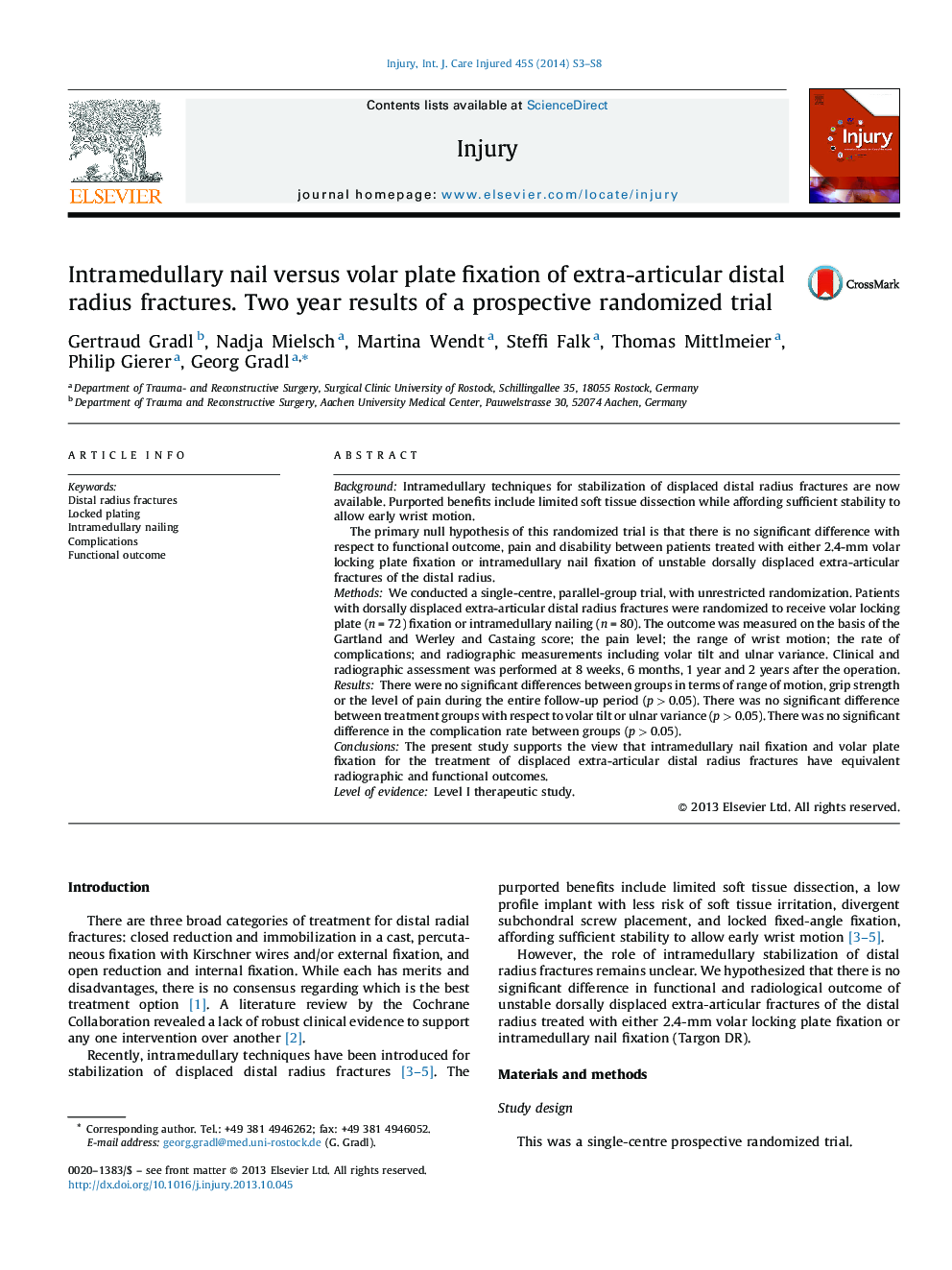| Article ID | Journal | Published Year | Pages | File Type |
|---|---|---|---|---|
| 3240099 | Injury | 2014 | 6 Pages |
BackgroundIntramedullary techniques for stabilization of displaced distal radius fractures are now available. Purported benefits include limited soft tissue dissection while affording sufficient stability to allow early wrist motion.The primary null hypothesis of this randomized trial is that there is no significant difference with respect to functional outcome, pain and disability between patients treated with either 2.4-mm volar locking plate fixation or intramedullary nail fixation of unstable dorsally displaced extra-articular fractures of the distal radius.MethodsWe conducted a single-centre, parallel-group trial, with unrestricted randomization. Patients with dorsally displaced extra-articular distal radius fractures were randomized to receive volar locking plate (n = 72) fixation or intramedullary nailing (n = 80). The outcome was measured on the basis of the Gartland and Werley and Castaing score; the pain level; the range of wrist motion; the rate of complications; and radiographic measurements including volar tilt and ulnar variance. Clinical and radiographic assessment was performed at 8 weeks, 6 months, 1 year and 2 years after the operation.ResultsThere were no significant differences between groups in terms of range of motion, grip strength or the level of pain during the entire follow-up period (p > 0.05). There was no significant difference between treatment groups with respect to volar tilt or ulnar variance (p > 0.05). There was no significant difference in the complication rate between groups (p > 0.05).ConclusionsThe present study supports the view that intramedullary nail fixation and volar plate fixation for the treatment of displaced extra-articular distal radius fractures have equivalent radiographic and functional outcomes.Level of evidenceLevel I therapeutic study.
